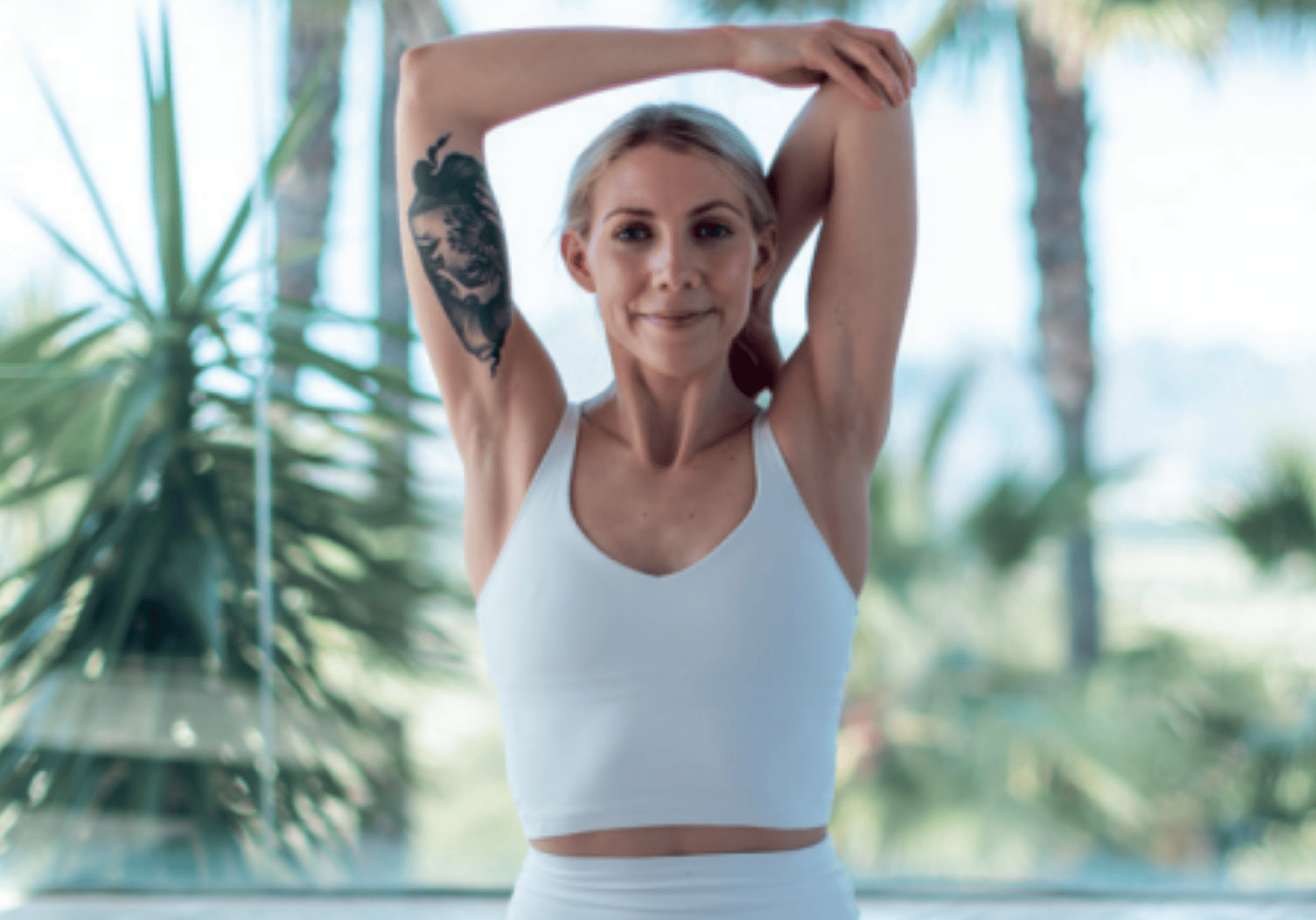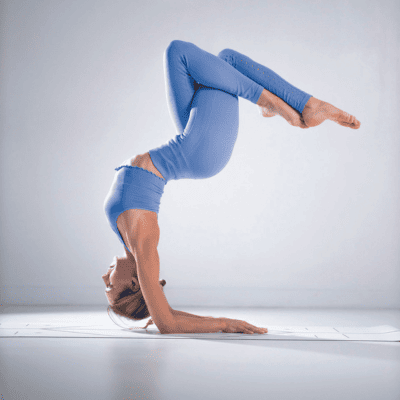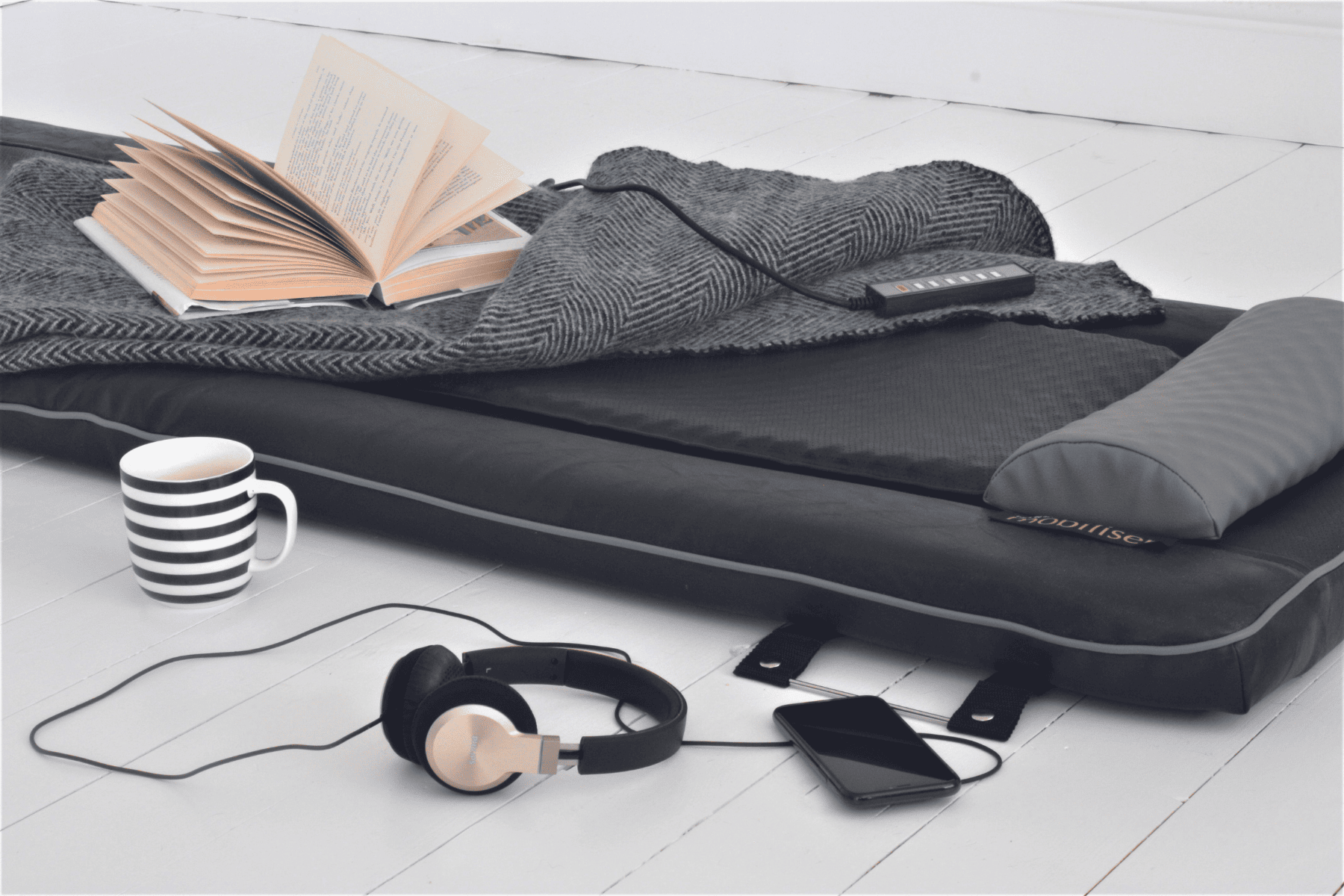
Better Backs
After suffering from back pain for years, yoga teacher Isabel Daniella Lancaster talks to OM about how the practice has helped in her journey and shares some simple tips for others
Reading time: 5 minutes
If you’re one of the millions of people suffering from back pain, then yoga can help. There are specialist yoga back care programmes available, but of course, prevention is always better than cure — that’s why we think everyone should do yoga!
Perhaps you’re one of the millions of people now working from home, or you’re still in the office all day…either way, you need to start thinking about your back.
In the meantime, we’ve identified one truly inspiring yogi to keep you positive and share some simple tips for looking after your back and living well. Isabel Daniella Lancaster is a yoga instructor who has been practicing for many years. Like most other yogis, she’s passionate about all things health and wellness. She has her own company, IDWellness, and runs in-person and virtual classes, as well as sound healing, meditation and Pilates sessions. But there’s one detail that perhaps separates her from many others — she’s still a thriving yoga teacher even being prone to back pain.
Here, she shares her story, including her long history of suffering from back pain, and offers some insight and tips for fellow sufferers.
“I first started getting back problems when I was 18. My back problems were caused by a combination of heavy exercise (mostly running) and sitting for a long time at my desk. My lower back became very tight and sore due to the combination of sitting for long periods of time in unsuitable chairs and uncomfortable positions and also as a result of not stretching enough after I had run. The situation got worse when I intensified my exercise regime. I was running, but by this time I was also practicing contortion and doing handstands. Although I thought I was being careful, it was too much for my body. I had pushed a little too much one day and my back went into spasm.”
Yoga Journey
“I began yoga when I first started getting back and knee problems through running and sitting for long periods. My knee, in particular, was causing me a lot of pain, affecting my ability to walk and any high[1]impact sports became a real problem. Yoga is a great form of exercise to do and although I was a little reluctant at first because I wasn’t sure it would make a difference, in the end, I couldn’t believe how much it helped — and continues to help — with my back and mental wellbeing!”
Back Care
“The stretching throughout the hips and back dramatically eased the tension that had built up in my back. As yoga focuses on strengthening and stretching equally, a regular practice eased my body of the complaints I had developed over time. The positions equally stretch and strengthen throughout the body to create balanced tension throughout the joints, tissues and muscles. The strengthening of the core muscles took the load off my back muscles and improved my entire posture, leading me to release strain and prevent overuse of my back muscles and other related muscles. The back is also known for holding our tensions and worries. Yoga also helped me to improve my thought patterns and how I dealt with stress. Through learning about these I became more at ease in general which resulted in less tension throughout my entire body.”

Yoga Styles
“I practiced a combination of Yin Yoga and slow, flowing yoga. I began with slow, flowing yoga because I had come from high-impact sports and had a very busy mind. The flowing movement allowed me to switch off as I focused on the movements. It also felt great to move more slowly and with low impact to take strain off my injuries. The flowing movement keeps the mind busy with the poses, stretches the body and it’s also a great workout. This was great for me because, at that time, the slow, flowing movements allowed me to be mindful, whilst feeling I was still exercising. It gave me the stretching and strengthening I needed. I think it’s really important to note that a slow practice is ideal, so I could be mindful of my movements, and with the intention of soothing my back with gentle movement rather than practicing anything too challenging, or fast paced.”
Slowing Down
“Over time, I felt more comfortable sitting with my thoughts and, being so busy, I was ready for some time to relax — this is when I started Yin Yoga. Yin Yoga involves holding seated and laying poses for 3-5 minutes per position. This relieves deep, underlying tension in the fascia and tissues. This was amazing for getting into the deeper tension in the body and further improving my thought patterns. When I first experienced back pain, I approached the practice with a more considered approach. I did a slow flow to ease around the area of pain, but was very careful not to poke the bear. I would recommend 1-to-1 sessions if it’s possible for anyone with more severe back complaints and collaboration with a doctor and osteopath or physiotherapist. At this point, I also integrated Pilates into my training and teaching too.”
TOP TIPS
- Remember to warm up and cool down when working out.
- Practice the best stretches to release tension in the back in this order: cat cow (10 breaths), shoulder bridge (10 repetitions); laying hamstring stretch with strap, low lunge, frog pose, pigeon pose and laying twist (ideally 1-2 minutes per position depending on the time you have).
- Strengthen with slow Pilates. Pilates is great for strengthening the areas surrounding the back — the psoas, transversus abdominis, glutes, obliques, quadratus lumborum.
- Take breaks to stretch and walk around when sitting at a desk for long periods of time.
- Stay positive! What stretching can do for back pain is really amazing, so give it a go. Often, it comes down to posture and compensations in the body, which can be equalised with a regular yoga practice. There is a psychological element with back pain too. In the yoga tradition, the back can also be associated with feeling stressed or worried. Yoga is also a great remedy to improve thought patterns and for learning to cope with stress mechanisms. Remember, the body stores what we don’t release. Our mental connection to pain in areas of the body can also remain in our mind, even when it’s not existing in our body anymore. Meditation and yoga are very powerful for bringing our thoughts and back into harmony, as it aligns body, mind and soul.
Find out more about Isabel Daniella Lancaster at: id-wellness.com or connect on Instagram @id_wellness
Please talk to your doctor or a medical professional before commencing any new exercise programme, especially if you have a pre-existing condition or other concerns.

Mobiliser System
If all else fails then the Mobiliser System from Back in Action, Europe's leading ergonomic office chair and home furniture shop, could help, just as it did for Isabel Daniella Lancaster. She says she uses the system for 15 minutes twice every day. “It is an amazing tool for mobilising joints throughout the spine and the rest of the body, increasing awareness of the body and areas which may be lacking in flexibility or carry tension,” she says. “Sometimes we can have great mobility in one part of the spine that compensates for other areas.
The Mobiliser can not only expose our areas of tension but also relieve them through palpating them. The great thing is all you need to do is lay down and relax! The machine does the rest of the work for you, so it’s something you even feel inclined to do. Back in Action also support you with a programme and regular check-ins, which is the support you need when your lower back isn’t at its best.”




